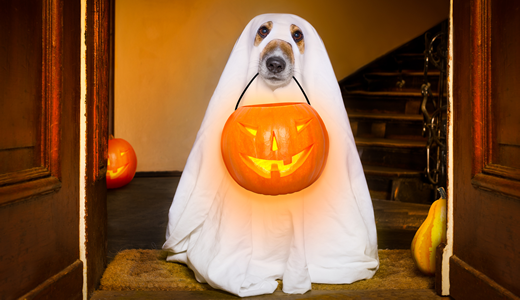For most of us, being genuinely frightened is probably something we try to avoid in the real world. But when it comes to entertainment, the opposite is often true. Many people love being scared. Especially this time of year, the time when horror movies rule the multiplexes and haunted houses pop up in seemingly every unused strip mall.
The rebooted Halloween rolls into theaters this weekend, for instance, and prognosticators think Michael Myers and Jamie Lee Curtis’s next round of bloody misadventures could scare up as much as $65 million—some 40 years after the franchise first debuted. (Halloween’s 11 movies since then are sort of like the Star Wars of the horror universe.) So what’s up with that?
Margee Kerr, an adjunct professor of sociology at the University of Pittsburgh, has spent two years studying this very question along with fellow Pittsburgh cognitive neuroscientist Greg Siegle. They’ve discovered that enduring a real-world frightfest like a haunted house produces results similar to running a 5K race: “There’s a sense of uncertainty, physical exertion, a challenge to push yourself—and eventually achievement when it’s over and done with,” Kerr writes in her theconversation.com article “Why Is It Fun to Be Frightened?”
She also notes:
Fun-scary experiences could serve as an in-the-moment recalibration of what registers as stressful and even provide a kind of confidence boost. … Movies like Halloween allow people to tackle the big, existential fears we all have, like why bad things happen without reason, through the protective frame of entertainment. Choosing to do fun, scary activities may also serve as a way to practice being scared, building greater self-knowledge and resilience, similar to rough-and-tumble play. It’s an opportunity to engage with fear on your own terms, in environments where you can push your boundaries, safely.
Meanwhile, the AMC movie chain has put out a press release warning moviegoers that it won’t allow Halloween fans to wear Michael Myers signature mask at screenings of the film in its theaters. “Come come to HALLOWEEN at AMC prepared for a scary great time, and leave the mask at home!” the statement said. (Look for Plugged In’s review of Halloween tomorrow.)
Also scary? The amount people will spend on Halloween costumes for themselves and for the furry friends this year. How much you ask? Try $3.2 billion on human costumes and $480 million on getups for their pets. Toldja it was a scary number!
Still competing at the multiplex for eyeballs, dollars and (probably) awards nominations is Lady Gaga and Bradley Cooper’s iteration of A Star Is Born. It seems the romance between their onscreen characters is resonating so deeply with some viewers that they’ve begun hoping the pair will get together in real life—never mind that Lady Gaga just announced her engagement to boyfriend Christian Carino (which came with a $400,000 engagement ring). Slate’s Ruth Graham writes:
Fans of Ladley Gooper—go with it—seem to know they’re working with thin evidence. But a dream is a dream. “I knew he was taken but I swear he is IN LOVE,” one fan tweeted. “Like the way he looks at her and talks about her he deffo loves her in some sort of way lol.” Another tweet: “also can Bradley d*vorce his wife and date Gaga cause they low key cute together.” “I ship it so hard,” said another.
It’s undeniable that the images and ideals, romances and relationships depicted on the big screen influence those who watch them. Which perhaps helps to explain why actress Keira has some movies she won’t let her three-and-half-year-old daughter watch. Namely, Cinderella, as she told Ellen DeGeneres: “Banned, because she waits around for a rich guy to rescue her.” She’s not too fond of another Disney fave either: “And this is the one that I’m quite annoyed about because I really like the film, but Little Mermaid. I mean, the songs are great, but do not give your voice up for a man. Hello.” Mouse House flicks she does approve of? Finding Dory, Moana and Frozen, all of which feature strong and independent female heroes.
Elsewhere in the realm of how images influence those who view them, the British fashion company Nasty Gal’s latest ads have been rejected by the U.K.’s Advertising Standards Authority for images featuring “unhealthily underweight” models.
Finally this week, social media often gets tagged for the many and multifaceted problems it perhaps creates. But every now and then, it accidentally reinforces a positive trend. Like, say, saving poetry. Specifically, Atlantic contributors Faith Hill and Karen Yuan focus on how Instagram, in particular, has played a surprising role in the rise of several contemporary poets. They write:
The limited confines of an Instagram post incentivize the bite-size lyric, the tidy aphorism, the briefly deliverable quote. Most Instagram poems advise how to live a better life—how to move on from a broken heart, how to believe in one’s self, how to pursue one’s dreams. On a platform full of idealized lifestyles in food, travel, and fashion, poetry presents yet more aspirational philosophies.
Who knew?






Recent Comments